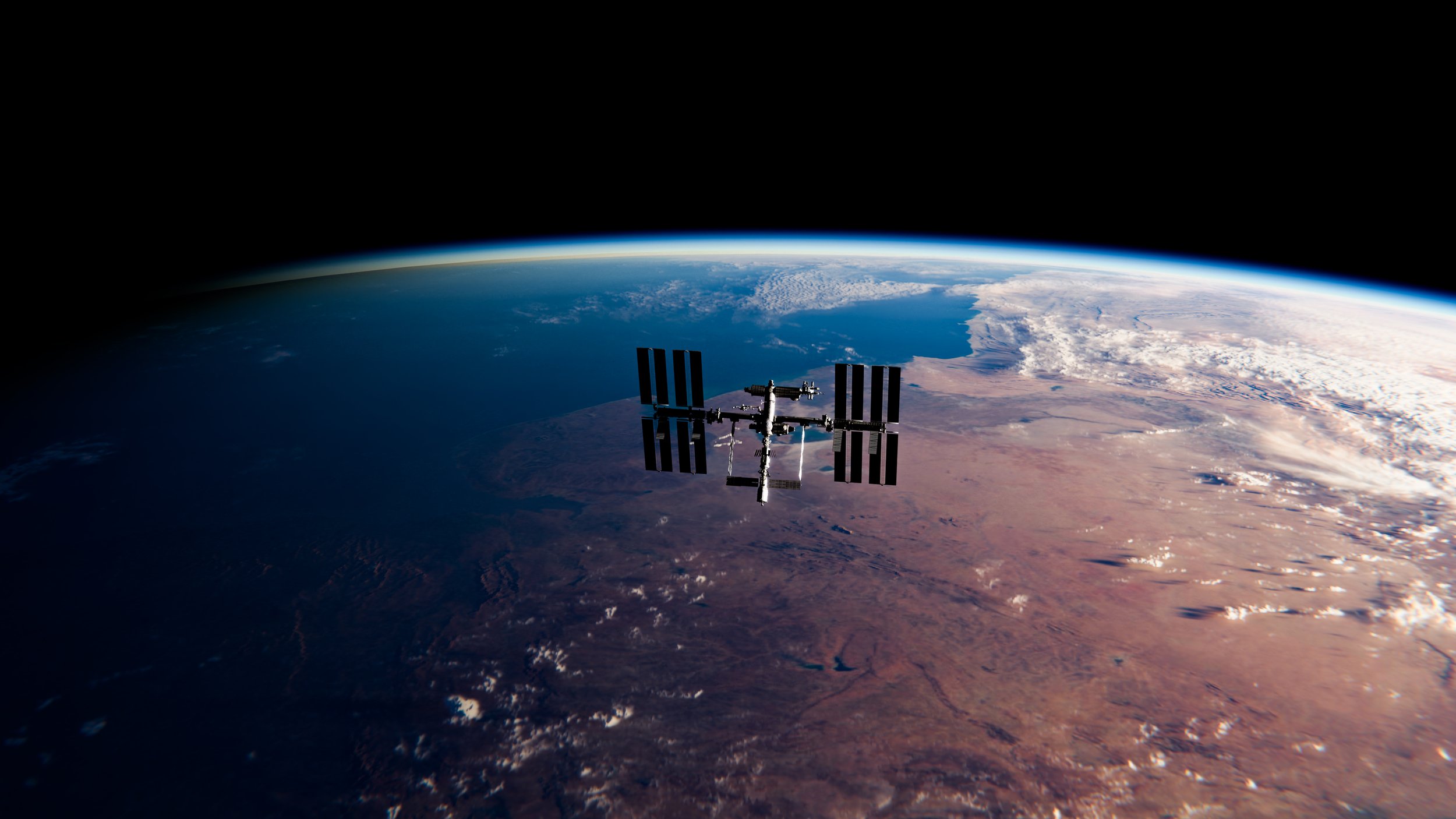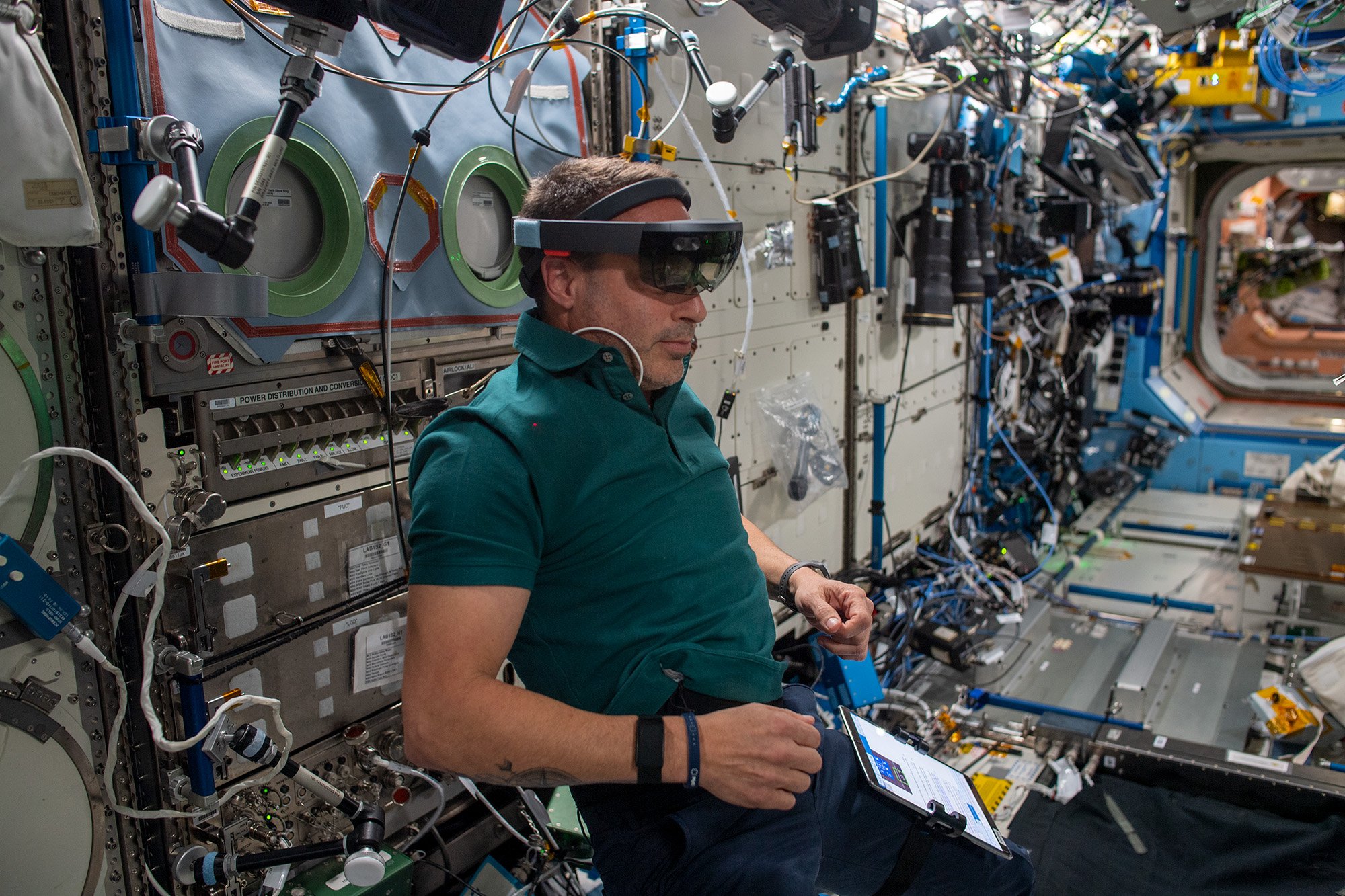Axiom Mission 1 is a research-focused mission, setting the standard for future private astronaut crews
The first all-private astronaut mission to the International Space Station, with a multinational crew of four, is ushering in a new phase of microgravity research for new government and non-government entrants around the world. The mission includes more than 25 science and research investigations planned during eight days aboard the ISS, as well as collection of pre- and post-launch physiological data.
Among the unique attributes of the Ax-1 Mission is the ability for astronauts to curate their own research portfolios in collaboration with leading institutions around the world, in addition to supporting Axiom-managed investigations.
Ax-1 is the first of several proposed missions to the ISS and a critical step toward Axiom Station, the world’s first commercial space station. Axiom Station aims to serve as a hub for research and commercial activities, helping to fully realize low-Earth orbit’s possibilities, while benefitting future deep space human spaceflight and improving life on Earth.
During the Ax-1 broadcast Christian Maender, Axiom Space’s Director, In-Space Manufacturing & Research discussed the research being conducted on Ax-1.
Crew-supported Research
Connor, Stibbe, and Pathy, each of whom has a long history of philanthropic involvement, also have partnered directly with research organizations in their regions on a range of human health and technology investigations, from aging and chronic pain to the first in-space demonstration of two-way holoportation, a mixed-reality app using special lenses to project images via hologram.
-
Ax-1 mission pilot, entrepreneur, and non-profit activist investor, in collaboration with Mayo Clinic and Cleveland Clinic:
Larry Connor’s research projects are the result of long-time partnerships with Mayo Clinic and Cleveland Clinic. The Ohio native has helped fund groundbreaking research at both institutions for much of the last decade.Connor’s experiments on behalf of Mayo Clinic would provide data on space travel’s impact on senescent cells and heart health. Connor is expected to be in charge of maintaining senescent cells – cells that have stopped dividing – at the ISS. These cells are linked to multiple age-related diseases.
“Ninety-five percent of what we’re trying to do is to benefit people on Earth,” said James Kirkland, M.D., Ph.D., director of the Robert and Arlene Kogod Center on Aging at Mayo Clinic. “I work in geriatrics. I never thought I’d be working with people headed to space; yet here we are.”
Connor’s ground research with Cleveland Clinic consists of pre- and post-mission high-resolution MRIs to study the effects of the spaceflight environment on spinal and brain tissue.
“This is a ground-level attempt to learn what kinds of effects space travel will have on civilians across a spectrum of ages,” said Thomas E. Mroz, MD, the Director of the Center for Spine Health and Director of Spine Research at Cleveland Clinic. “There’s so much to learn. How long can people stay in space? Or what do they need based on their health, etc.”
Learn more about Larry -
Eytan Stibbe will carry out research activities on behalf of several Israeli innovators, the Ramon Foundation, the Israel Space Agency in the Israeli Ministry of Innovation, Science, and Technology. During his mission, named "Rakia," he will facilitate scientific experiments and will conduct educational and artistic activities to connect the younger generation in Israel and around the globe on the values of peace, innovation, and social responsibility. His research projects include testing radiation personal protective equipment, as well as studies into astronaut eye health, cognitive activity, and more.
“The ‘Rakia’ mission is a unique opportunity for Israeli entrepreneurs and researchers to advance innovative ideas and will provide a rare platform for them to test their enterprises in a unique study environment, thereby contributing to the international and Israeli research ecosystem,” said Inbal Kreiss, Chairwoman of the Scientific and Technological Committee and Head of Innovation of Systems Missiles and Space Group at Israel Aerospace Industries. “The mission gives expression to international collaborations between the world’s most prominent academic and research institutions, start-ups and tech companies, medical institutions, and more.”
“A groundbreaking number of experiments were chosen by a scientific and technological committee and integrated with NASA. The experiments are innovative and trailblazing, arising from diverse disciplines – astrophysics, agriculture, optics, communication, biology, healthcare, neurology, and ophthalmology – and were chosen based on their potential impact on research and innovative approach. They are expected to lead to technological, scientific, and medical breakthroughs that will impact the quality of human life on Earth and the future of humanity's long-term missions beyond Earth.”
Learn more about Eytan -
Mark Pathy will take part in scientific research projects in partnership with six Canadian universities and their investigators, as well as proof-of-concepts with two tech startups including the world’s first in-space demonstration of two-way holoportation – a mixed reality app for special lenses that receives two-way 3D projections as a hologram to communicate between users remotely. He plans to conduct Earth observation activities in partnership with the Royal Canadian Geographical Society (RCGS) and Western University.
He is taking part in a program by RCGS that is intended to engage national and international audiences in addressing the environmental health and sustainability of the Great Lakes and their ecosystem, promoting conservation, restoration, protection, and reconciliation with the water, the land, and the Indigenous peoples of the watershed. Pathy has also integrated additional educational initiatives into his Ax-1 activities, providing STEM curriculum to more than a dozen high schools across Canada.
“I am extremely proud of our partnership with Mark, and also delighted to welcome him in the Society’s College of Fellows,” said John Geiger, CEO of the Royal Canadian Geographical Society. “The unique perspectives Mark will be contributing from space will help build a lasting legacy of learning tied to the protection and conservation of our Canadian ecosystem – long after his mission is complete,” he added.
Learn more about Mark
Ax-1 Mission Specialist Mark Pathy successfully conducted the first ever two-way holoportation session from the International Space Station, connecting with Canadian astronauts Dr. David Williams and Joshua Kutryk on the ground from NASA’s Mission Control.
Connor’s research projects are the result of long-time partnerships with Mayo Clinic and Cleveland Clinic. The Ohio native has helped fund groundbreaking research at both institutions for much of the last decade.
Connor’s experiments on behalf of Mayo Clinic would provide data on space travel’s impact on senescent cells and heart health. Connor is expected to be in charge of maintaining senescent cells – cells that have stopped dividing – at the ISS. These cells are linked to multiple age-related diseases.
“Ninety-five percent of what we’re trying to do is to benefit people on Earth,” said James Kirkland, M.D., Ph.D., director of the Robert and Arlene Kogod Center on Aging at Mayo Clinic. “I work in geriatrics. I never thought I’d be working with people headed to space; yet here we are.”
Connor’s ground research with Cleveland Clinic consists of pre- and post-mission high-resolution MRIs to study the effects of the spaceflight environment on spinal and brain tissue.
“This is a ground-level attempt to learn what kinds of effects space travel will have on civilians across a spectrum of ages,” said Thomas E. Mroz, MD, the Director of the Center for Spine Health and Director of Spine Research at Cleveland Clinic. “There’s so much to learn. How long can people stay in space? Or what do they need based on their health, etc.”
Under the theme “Caring for People and the Planet,” Mark Pathy is expected to take part in scientific research projects in partnership with six Canadian universities and their investigators, as well as proof-of-concepts with two tech startups including the world’s first in-space demonstration of two-way holoportation – a mixed reality app for special lenses that receives two-way 3D projections as a hologram to communicate between users remotely. He plans to conduct Earth observation activities in partnership with the Royal Canadian Geographical Society and Western University.
A number of research projects supported by Pathy are led by the clinician-researchers at The Montreal Children’s Hospital and Child Health Research at the Research Institute of the McGill University Health Centre, including research that aims to help unravel the mysteries surrounding chronic pain and sleep disturbances during space travel, an environment characterized by microgravity, exposure to radiation, and isolation.
“I thank Mark Pathy for using the Ax-1 mission to champion the transformational role of philanthropy and research. The Montreal Children’s Foundation will benefit from Mark’s efforts to help create brighter futures for sick newborns, children, teens, and pregnant women in Montreal and around the world,” said Renée Vézina, President of The Montreal Children’s Hospital Foundation.
Pathy is expected to take part in additional research projects with other universities across Canada, including research led by Université de Montréal on Spaceflight-Associated Neuro-Ocular Syndrome (SANS), which manifests through changes in visual acuity experienced by many astronauts on long-duration space flights and is considered a risk for deep space exploration. Additional research projects are conducted in partnership with researchers at UBC, Ontario Tech, Simon Fraser University, and University of Calgary, which were selected following consultations facilitated by the Canadian Space Agency with the space research community.
In addition to human research, Pathy plans to lead Earth observation activities which will contribute to further analysis of the impact of climate change, urbanization, and other factors on the ecology and human habitation of North America. This is led by Western University as well as The Royal Canadian Geographical Society (RCGS). He is taking part in a program by RCGS that is intended to engage national and international audiences in addressing the environmental health and sustainability of the Great Lakes and their ecosystem, promoting conservation, restoration, protection, and reconciliation with the water, the land, and the Indigenous peoples of the watershed. Pathy has also integrated additional educational initiatives into his Ax-1 activities, providing STEM curriculum to more than a dozen high schools across Canada.
“I am extremely proud of our partnership with Mark, and also delighted to welcome him in the Society’s College of Fellows,” said John Geiger, CEO of the Royal Canadian Geographical Society. “The unique perspectives Mark will be contributing from space will help build a lasting legacy of learning tied to the protection and conservation of our Canadian ecosystem – long after his mission is complete,” he added.
Stibbe plans to take part in Ax-1 on behalf of the Ramon Foundation and in collaboration with the Israel Space Agency in the Israeli Ministry of Innovation, Science, and Technology. His mission is named "Rakia," after the dome (atmosphere) created by God on the second day after the firmament, which protects life on Earth. During his mission, he will facilitate scientific experiments and will conduct educational and artistic activities to connect the younger generation in Israel and around the globe on the values of peace, innovation, and social responsibility. For the first time, an astronaut will represent Israelis on the International Space Station in Hebrew. The "Rakia" mission marks another milestone in the participation of Israel in human space exploration.
“The ‘Rakia’ mission is a unique opportunity for Israeli entrepreneurs and researchers to advance innovative ideas and will provide a rare platform for them to test their enterprises in a unique study environment, thereby contributing to the international and Israeli research ecosystem,” said Inbal Kreiss, Chairwomen of the Scientific and Technological Committee and Head of Innovation of Systems Missiles and Space Group at Israel Aerospace Industries. “The mission gives expression to international collaborations between the world’s most prominent academic and research institutions, start-ups and tech companies, medical institutions, and more.”
“A groundbreaking number of experiments were chosen by a scientific and technological committee and integrated with NASA. The experiments are innovative and trailblazing, arising from diverse disciplines – astrophysics, agriculture, optics, communication, biology, healthcare, neurology, and ophthalmology – and were chosen based on their potential impact on research and innovative approach. They are expected to lead to technological, scientific, and medical breakthroughs that will impact the quality of human life on Earth and the future of humanity's long-term missions beyond Earth.”
Select Ax-1 Mission Investigations
In addition to the crew-curated research portfolios, Axiom Space is collaborating with a variety of institutions to conduct several science investigations. Demonstrations range from self-assembling technology for satellites and future space habitats and air purification to cancer stem cell study and pre- and post-flight collection of physiological data.
Dr. Emmanuel Urquieta, the chief medical officer for the Translational Research Institute for Space Health (TRISH), joined the launch webcast to discuss the organization’s EXPAND (Enhancing eXploration Platforms and ANalog Definition) program, which compiles health data from private spaceflight into a centralized research database. The data broaden understanding of how space impacts human health and how to prepare humans for the demands of long-distance and long-duration space travel, including to the Moon and eventually, to Mars.
“One of the outcomes – and main applications for spaceflight – that we want to get from this research is that short duration missions like Axiom-1 are very relevant in the context of Artemis missions,” said Dr. Urquieta. “When we go back to the Moon, the first missions will be roughly the same duration as this Axiom one. So, anything new we learn from this mission is going to be absolutely valuable.”
Credit: MIT Space Exploration Initiative / TU Dortmund Fraunhofer Institute - Artist’s depiction of a future TESSERAE self-assembling space station in orbit around Mars
TESSERAE
In collaboration with MIT Media Lab Space Exploration Initiative and Aurelia Institute
Tessellated Electromagnetic Space Structures for the Exploration of Reconfigurable, Adaptive Environments is a multi-year research program exploring self-assembly methods for in-space construction. Named after the small tiles in ancient Roman mosaics, the modular tiles join to create a larger structure. They pack flat for launch and once activated, form a robotic swarm of autonomous and self-assembling units used for on-demand construction, with future applications ranging from an extra room on a space station, to parabolic mirrors, to a home base on other worlds. The prototypes launching on the Ax-1 Mission include an extensive suite of sensing and electro-permanent magnets that monitor diagnostics – provide insight into the quality of bonds between tiles – and drive conformations. This scaled demonstration will build on previous microgravity evaluations of the experiment to explore a new frontier for in-orbit construction of satellites and future space habitats.
Credit: Japan Manned Space Systems Corporation
JAMSS Photocatalyst
In collaboration with JAMSS, Tokyo University of Science, and Tokyo University of Agriculture and Technology.
The Japan Manned Space Systems Corporation (JAMSS) photocatalyst air purification device will launch on Ax-1 for a technical demonstration to verify the performance of the improved filter. This experiment also will deploy a control device without photocatalytic LEDs, to evaluate the JAMSS photocatalytic filter. With an improved air filter, the JAMSS device will be able to clean the air on the ISS and remove cabin odor, using the power of light to safely convert volatile compounds in the air into carbon dioxide and water with the goal of improving the quality of life for living and working in space. JAMSS will be the only Japanese company with research on the Ax-1 mission.
Credit: Baylor College of Medicine
TrISH
A consortium of Baylor College of Medicine, CalTech, and MIT
Translational Research Institute for Space Health is conducting biomedical research on each of the crewmembers both before the launch and after their return. A variety of data will be collected, including physiological data, a battery of cognitive tests, balance and perception tests, and visual acuity tests. Increasing human health and performance is a goal of the EXPAND program, which compiles health data from private spaceflight into a centralized database to broaden the understanding of how space travel impacts human health and how to prepare humans for long-distance and duration travel.
Credit: Axiom Space
Modeling Tumor Organoids in low-Earth Orbit
In collaboration with UC San Diego and Sanford Consortium for Regenerative Medicine
Using a human cancer stem cell nanobioreactor model (a vessel that accelerates cell growth conditions) and cancer stem cell reporter system, this investigation will leverage the accelerated aging aspects of the microgravity environment to evaluate early pre-cancer and cancer changes in tumor organoids. This cellular biology project is focused on identifying biomarkers for early detection and supports future aims of cancer stem cell research on the ISS. The Ax-1 crew will study cell samples under a high-resolution microscope to determine cell cycle activity in cancer growth.
Consider microgravity as an innovation platform for your research in the life and physical sciences.












